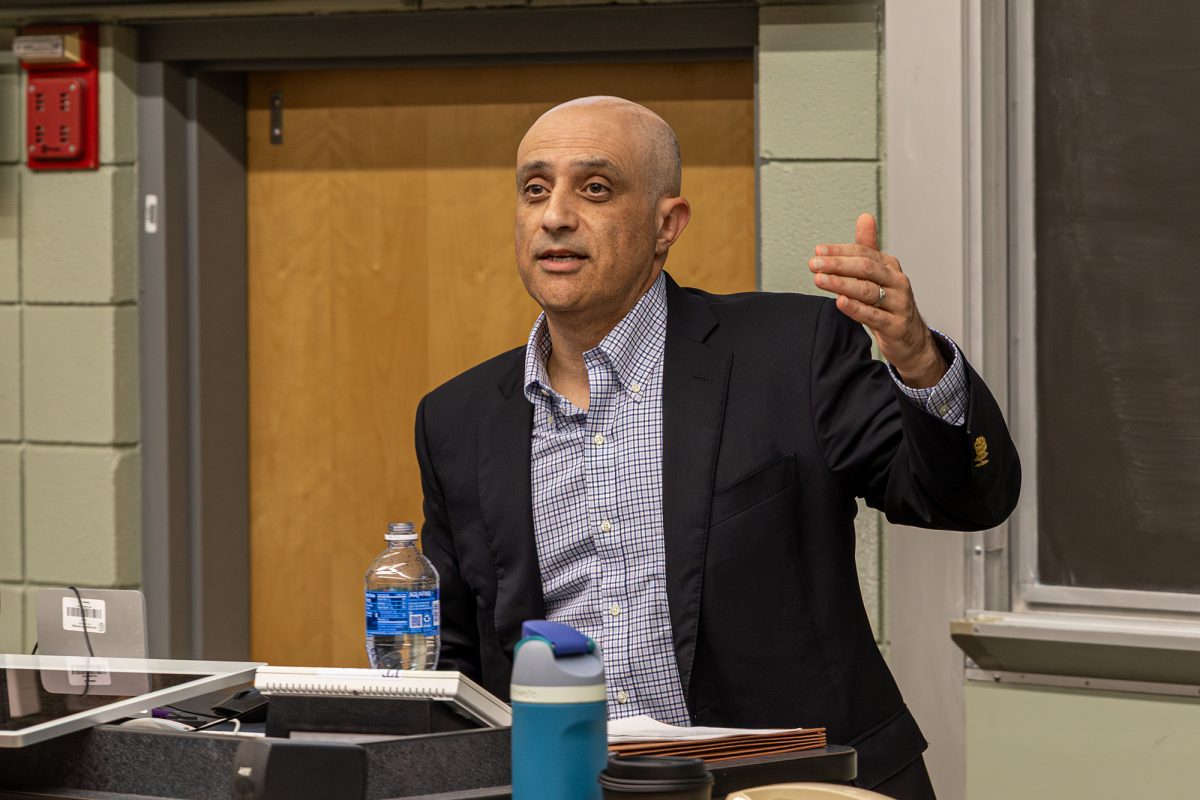Film maker River Branch screened her latest documentary, “The Voice That Broke the Silence,” on Monday night in the Clark Lounge. Branch is an assistant professor of Communication Arts at Allegheny College in Pennsylvania. The screening was sponsored by the Park Center for Independent Media, the Latin American studies minor and the politics department.
Political and social unrest erupted in Oaxaca, Mexico, as a result of the police targeting teachers who were peacefully protesting in 2006. The people of Oaxaca fought back against their government and used community media to mobilize.
Sage Daugherty, online news editor, spoke with Branch about her film and the role of community media in Oaxaca.
Sage Daugherty: How did you get your start in film and documentaries?
River Branch: I actually came to it later in life, so I didn’t begin to actively study and work with film until I was about 29. I had a liberal arts undergraduate education and was very invested in issues of social justice, and I also have always been invested in storytelling and storytelling’s relationship to social justice. I didn’t think I could do something like a documentary because I didn’t identify as a documentarian at age 16. I took a six-month course at the University of Washington in documentary production to see if I had any strength in that area. I realized that instead of pursuing human-rights law, which was a primary drive, that I wanted to work on issues of social justice through storytelling and the power of that medium.
SD: What drew you to Oaxaca and this event in particular?
RB: I was drawn by the work of community media in Oaxaca and what was happening there, and I felt like what was happening in the different uses and practices of community media positioned media to have a very powerful impact in the political sphere. At the same time, the government attacked the teachers; they attacked the community radio stations. In that attack, [the radio stations] were identifying that they, too, felt they were playing a powerful role in the political sphere. I was watching the ways people in community media were being targeted and … even amidst that targeting and very real risk, [they] were holding and claiming that space and unwilling to concede that space.
SD: How did community media in Oaxaca jumpstart this grassroots movement?
RB: It was doing it in a number of ways. One, it was truly a space for dialogue and discourse that people were really invited to engage with each other within that space and to engage critically. The community really felt like it was their space, and that it mirrored community practices of assembly, of a way of communicating politically. That’s why it was positioned to succeed — [the media’s] sole agenda was to be a voice for the people. In being a voice for the people, it wasn’t one figure doing that — it was the determination to open up that space as a voice for the people.
SD: You filmed this documentary from 2006 to 2010. Describe the filming process.
RB: That part was really tough for me. I’m a professor at a small school, so moving from being immersed to being back in my role teaching and working here was a real tension because I respect my teaching as well, and so that asked for my presence. Part of what was difficult about that was that I felt a real commitment to the people I was working with, and there is a history of exploitation in documentary practices. I did not want to be another westerner participating in that conversation. Thankfully, the media activist and community activist that I worked with down there really respected what I was doing, and I earned their respect … We don’t want this story to be bound by the borders of Oaxaca, and we want this to be a story that U.S. audiences are engaged with. We want the world to know what’s going on and to understand that.







